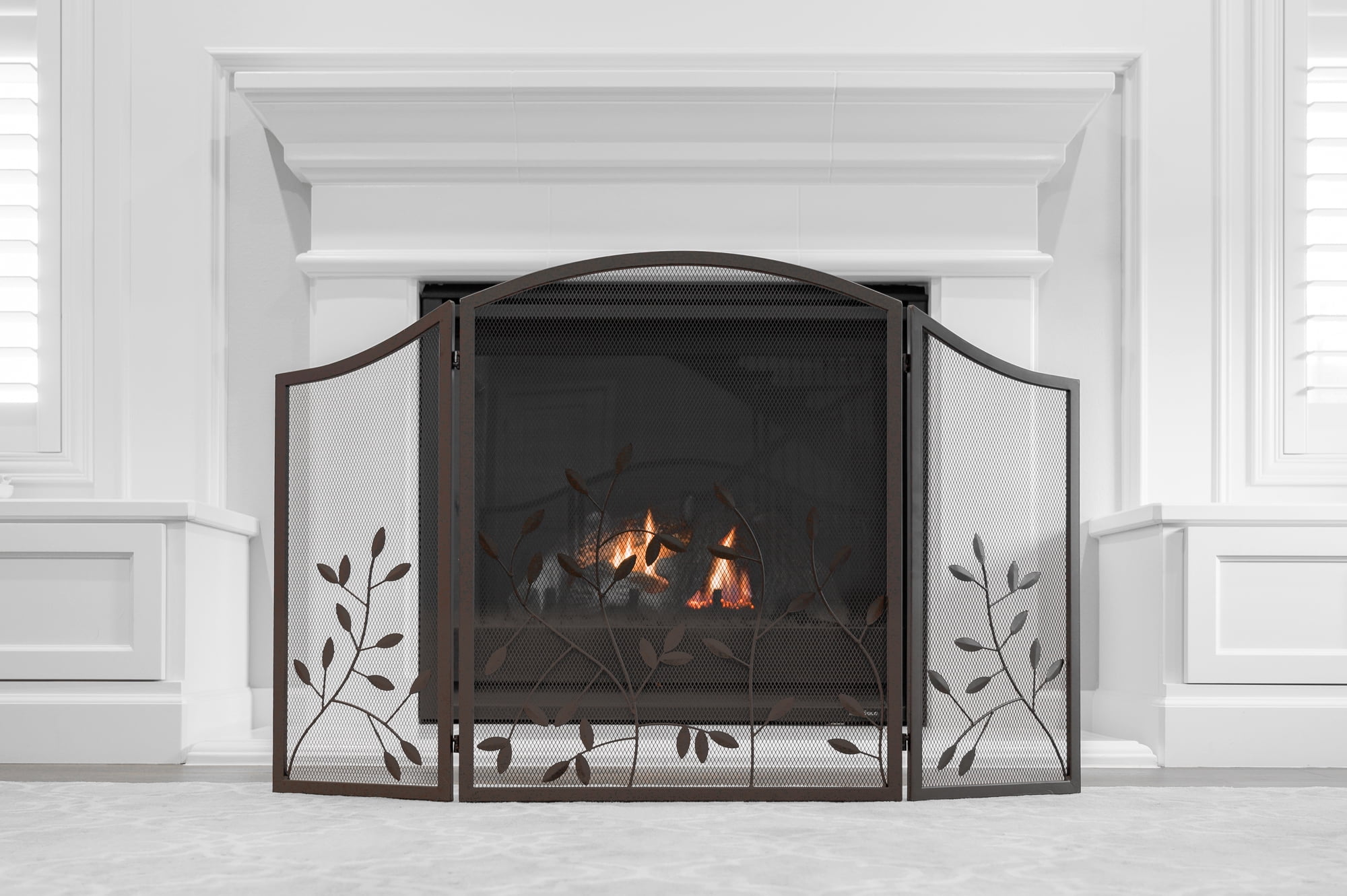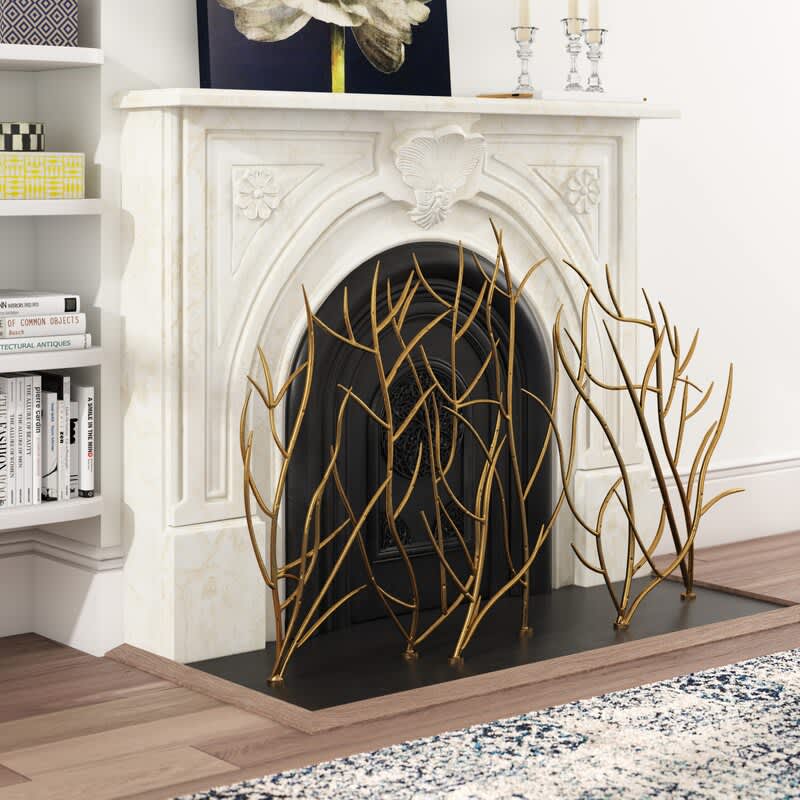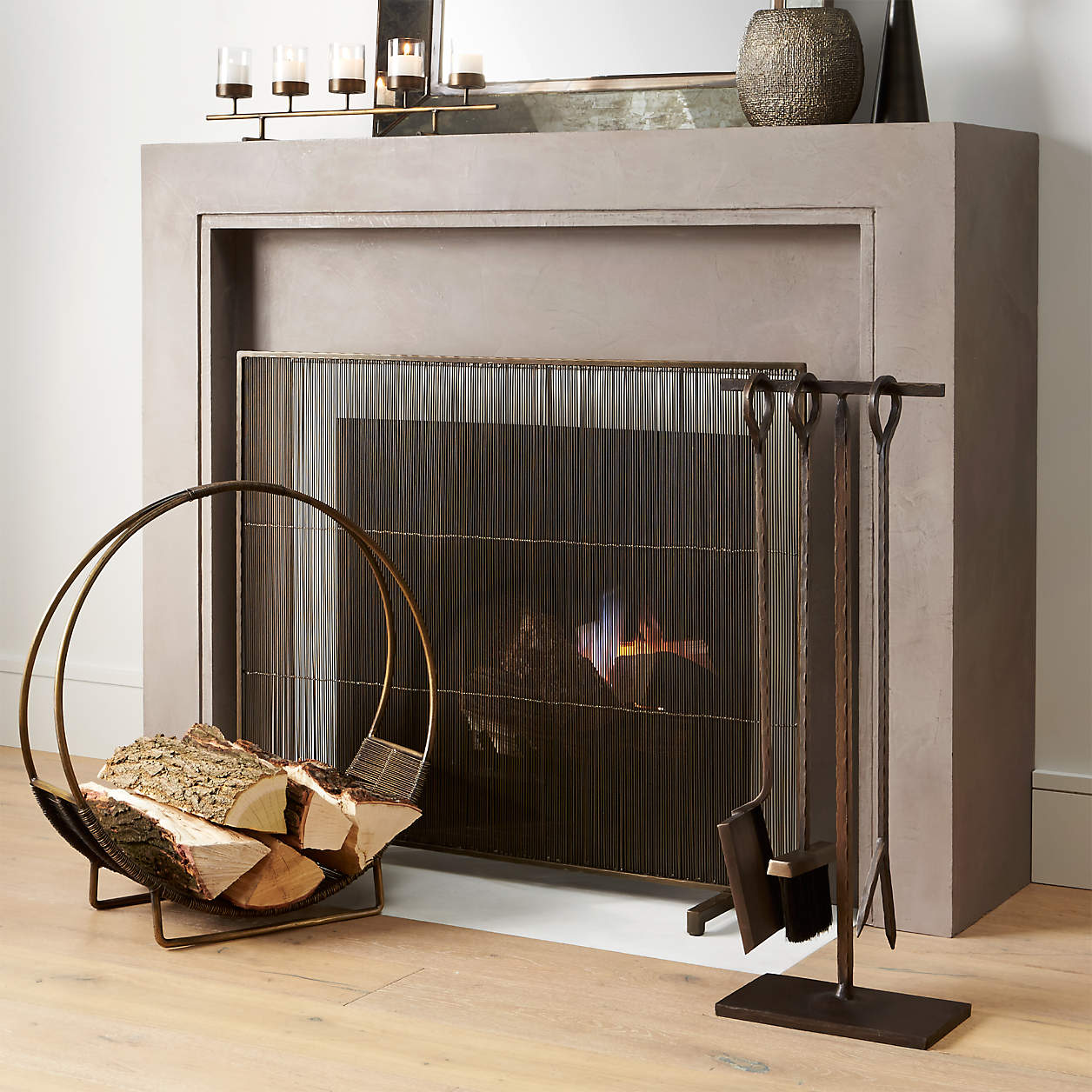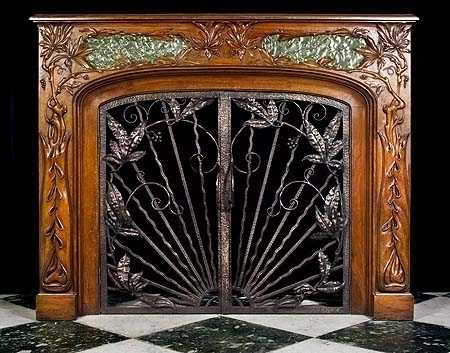Key Features That Define an Elegant Fireplace Screen
A truly elegant screen stands out by blending design with function. These key features help define its character and effectiveness in a stylish home setting.
- Graceful materials and finishes.
Elegant screens often feature materials like wrought iron, brass, or tempered glass. I’ve found that brushed finishes or polished metals provide a refined, timeless look. Matte black is classic, while antique gold adds richness. - Intricate yet balanced detailing.
Elegant doesn’t have to mean flashy. I prefer screens with subtle scrollwork, geometric patterns, or arched tops. The detailing adds charm, but it shouldn’t overpower the fireplace. Good design feels intentional and composed. - Sturdy yet refined frames.
The frame should be solid, with clean edges and firm support. I always look for welded joints, solid feet, and stable hinges. Thin or flimsy frames don’t hold up and tend to look cheap. Weight gives the screen presence without being bulky. - Functional design with decorative appeal.
An elegant screen protects without getting in the way. I like folding panels or single-hinged units that are easy to move but stay in place when in use. Decorative appeal should never come at the cost of utility or comfort. - Proper scale for the fireplace.
Size is key. A screen that’s too small feels underwhelming, while one that’s too big overwhelms the hearth. I always measure the firebox opening and choose a screen that provides a generous border without dominating the mantel. - Sophisticated finishes over loud color.
An elegant look favors understated tones—think bronze, pewter, and iron. I avoid overly bright or shiny colors. Subtle textures or hand-applied finishes enhance the depth and give the piece a more custom appearance.

Popular Styles That Embody Elegance
Elegant screens come in several styles, each bringing its own visual impact. From classic to contemporary, there’s something for every taste and room design.
French country and scrollwork styles.
I love the look of French-inspired screens. Their curved frames and floral motifs offer softness and grace. These work well in rooms with vintage or antique decor and add a cozy charm to stone or brick fireplaces.
Modern minimalism with sleek lines.
For contemporary spaces, I lean toward minimalist screens with straight edges, tempered glass panels, and black or steel finishes. These screens don’t draw too much attention but frame the fire beautifully and add quiet sophistication.
Art Deco geometric patterns.
Bold, symmetrical patterns define Art Deco screens. I’ve used them in homes where glamour and symmetry are key. Brass and mirror-like finishes bring a level of refinement that instantly elevates the space.
Traditional arched and three-panel screens.
This style works best for formal living rooms. An arched screen or tri-fold design with mesh backing and ornamental knobs or finials adds both structure and classic charm. It’s hard to go wrong with this style if you’re after timelessness.
Gothic and old-world ironwork.
Heavy ironwork with pointed arches or medieval-inspired patterns gives an elegant, dramatic look. I often use these in older homes or spaces with stone fireplaces where a bold statement feels right at home.
Custom artisan-crafted screens.
When clients want something truly unique, I suggest custom screens made by local artisans. These allow for personal touches—monograms, family crests, or one-of-a-kind patterns—that make the piece both elegant and personal.
Materials That Add Sophistication
The material of a fireplace screen plays a huge role in the overall look and feel. Some materials feel heavy and classic, while others appear light and modern. The key is finding one that complements the room and lasts.
Wrought iron for traditional strength.
Wrought iron is a classic choice. I like its solid weight, natural texture, and ability to hold curves well. It has a hand-forged quality that makes it feel both strong and beautiful. It’s especially suited for traditional or rustic spaces.
Brass for a warm, luxurious glow.
Brass adds warmth and a golden hue that instantly gives the room a more formal tone. Polished brass feels regal, while aged or antique brass offers a vintage charm. I often use brass in traditional or transitional interiors.
Steel with powder-coated finishes.
Steel offers versatility. With powder-coated finishes in black, bronze, or gray, it works in both modern and transitional spaces. It’s resistant to rust and heat, making it both practical and stylish.
Tempered glass for clean lines.
Tempered glass offers a barely-there appearance that allows the fire to shine. I’ve used these in minimalistic designs where less is more. The safety glass resists high temperatures and is easy to clean, though fingerprints can be an issue.
Mesh backing for safety and subtlety.
Fine mesh is often tucked behind decorative frames. I prefer dark mesh that blends in without distracting from the design. It does the job of catching sparks while keeping the front design unobstructed.
Mixed materials for visual interest.
Sometimes, I mix iron frames with brass accents or use wood inlays with metal details. When done right, mixing materials brings balance and texture to a screen, making it a true centerpiece of the fireplace.
Decorating Around an Elegant Screen
A well-chosen fireplace screen should be part of a larger visual story. Decorating around it helps anchor the screen in your space and creates a cohesive, welcoming setting.
Pair with a styled mantel display.
I like to create symmetry above the fireplace. A well-decorated mantel—with a centered mirror or artwork and balanced decor—frames the screen below. The goal is harmony between the upper and lower halves of the fireplace wall.
Use matching fireplace tools and accessories.
Tongs, pokers, and log holders can complement the screen’s finish and style. I often match brass tools with brass-accented screens or choose black iron sets for traditional designs. These little choices help tie everything together.
Add a hearth rug or decorative log holder.
I sometimes place a subtle hearth rug or a sleek log basket nearby. These accessories blend function and beauty while extending the elegance outward from the fireplace. Natural woven textures or leather can add even more character.
Complement with nearby furniture.
A cozy chair or reading nook near the fireplace makes the area more inviting. I position seating so the screen is visible but not blocked. A soft throw blanket and classic lamp add to the charm of the setting.
Incorporate subtle seasonal changes.
While the screen remains in place year-round, I like rotating small seasonal touches nearby—like a garland in winter or fresh flowers in spring. These updates keep the hearth feeling alive without disturbing the screen’s elegance.
Use lighting to highlight the design.
Strategically placed lighting, like sconces or floor lamps, draws attention to a beautiful screen. I’ve used warm LED spots directed toward the hearth to create mood and enhance the detail of the screen during evening hours.
Common Mistakes to Avoid
Even the most elegant screen can fall flat if it’s poorly matched or improperly installed. These common pitfalls are worth watching out for when upgrading your fireplace.
Choosing the wrong size.
One of the biggest issues I see is screens that are too small or too wide for the fireplace. Always measure carefully. A poorly fitting screen throws off the balance and looks like an afterthought instead of a design feature.
Ignoring compatibility with fireplace type.
Not all screens suit every fireplace. A screen that works for gas might not be safe for a wood-burning fire. I always double-check whether the screen is freestanding or needs mounting before choosing a style.
Overcomplicating the design.
Sometimes people choose screens with overly intricate patterns or too much shine. I’ve found that simple elegance often makes a stronger impression. Clean lines and balanced details create a timeless look that lasts.
Neglecting safety features.
A screen must function first. Decorative units that don’t block sparks or aren’t heat-resistant put safety at risk. I ensure the mesh is fine enough to catch embers and that the structure can withstand heat over time.
Mismatched finishes.
Mixing clashing metals—like chrome with antique brass—can confuse the design. I try to keep finishes consistent across the fireplace and accessories. If mixing metals, I aim for complementary tones, not opposites.
Forgetting to clean and maintain.
Dust, soot, and fingerprints can build up quickly. I clean metal and glass screens regularly with appropriate products. Well-maintained screens continue to shine and serve as a graceful focal point season after season.
Can an elegant fireplace screen be both decorative and functional?
Absolutely. The best screens blend beauty and protection. I always choose one with fine mesh and a sturdy frame that also enhances the room’s design.
What materials last longest for fireplace screens?
Wrought iron and steel hold up well over time. Brass also lasts but may patina unless sealed. Tempered glass is durable, though it needs more cleaning to stay clear.
How do I choose the right size screen?
Measure the width and height of your firebox. I recommend a screen that’s slightly wider and taller than the opening to ensure safety and a well-proportioned look.
Should the screen match other fireplace tools?
Yes, coordinating finishes among screens, tools, and log holders creates a polished appearance. It’s a subtle but important detail that unifies the fireplace area.
Is it better to use a single panel or three-fold screen?
It depends on your space and style. Single panels are sleek and modern, while tri-fold screens add traditional flair and flexibility in positioning.
How often should I clean the screen?
At least once a month if the fireplace is in use. For decorative-only fireplaces, a seasonal cleaning is usually enough to keep the screen looking its best.
Best Modern Fireplace Screens
Antique Fireplace ScreensExtraordinarily Elegant Ember Enclosures!
Related Posts:






